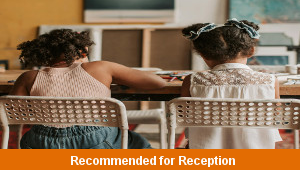Lesson Two – Number Six

This numeracy teaching pack for the Foundation Stage gets the children to read, write and count different numbers of tools and equipment that can be used in a school classroom that make sums of numbers to six.
The class can compile and complete a pictogram to keep a record of the numbers that have been rolled when using a dice to match the face numbers from one to six.
Download this teaching pack including a lesson plan, classroom activities and an interactive presentation to read, write and count different numbers of tools and equipment that can be used in a school classroom that make sums of numbers to six
Activities in this teaching pack include a worksheet to select and record the numbers rolled when using a dice to match the face numbers from one to six and a template to identify and produce sets of matching objects to match different numbers to six.
The interactive presentation gets the children to explore how to read, write and count different numbers of classroom objects that make sums to six.
This lesson is part of a numeracy scheme of work to get the children to practise counting different numbers of objects to ten, match numerals to counted objects and sort numbers into their correct order. There are teaching activities for shared learning, differentiated worksheets to support independent learning and interactive presentations to introduce concepts and key skills.
-

School Friends
Investigate, describe and model some of the special ways of providing practical, spiritual and emotional support to other pupils in the school
-

School Pictograms
Explore how to count and record the numbers of different pieces of school equipment that can be found in trays stored around the classroom
-

Listening Skills
Develop and refine listening skills when practising how to follow commands and instructions when playing games and role-playing actions
-

Halving Things
Explain and model how to find and record the halves of some of the different objects that can be used at home and in school
